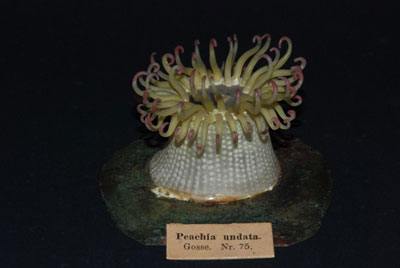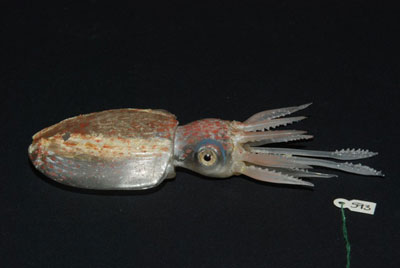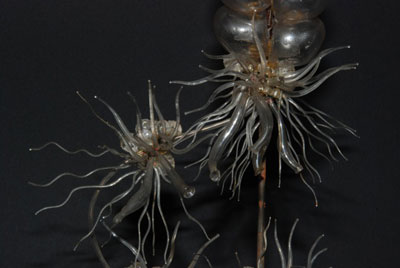Mann showcases scientifically accurate glass sea life sculptures by famed artists
By Susan S. Lang




For more than 135 years, a remarkable collection of 540 scientifically accurate glass sea life sculptures by a pair of renowned glass artists sat unnoticed in long-forgotten drawers at Cornell. Several decades ago, Cornell Professor Tom Eisner rediscovered the collection and since then, 150 specimens have been restored and put on display.
The newest display of about 30 sculptures opens June 11 in Cornell's Mann Library. At 1 p.m. that day, just in time for Reunion, Drew Harvell, Cornell professor of ecology and evolutionary biology, will describe the fragile ocean biodiversity captured in the work and the importance of the sea life sculptures to the 19th and early 20th century study of ocean biology, in the lecture "Out of the Teeming Sea" in Mann library.
The glass sculptures of the Cornell Collection of Blaschka Invertebrate Models, which is stored at Corning Museum of Glass, are the work of famed 19th-century glass artists Leopold and Rudolf Blaschka.
"The Blaschkas' sea of glass animals is a fantastic 19th-century collection mixing the enchanting and impossibly rare jellyfishes of the open ocean with the beautiful, but more common, invertebrates of British tidepools," says Harvell, curator of the collection. "The marine biodiversity of the Blaschkas is a strange phantasmagorical parody of life in the oceans, for these were artists as well as keen natural historians with an eye for the forms that would enchant in glass but were too rare or fragile to be seen readily in their natural environment. The extraordinary biodiversity they capture is dominated by the ephemeral, translucent, bright forms of the Cnidaria (anemones, jellyfish, corals), unshelled mollusks (nudibranchs, octopus and squid), brilliant tentacled worms and the starfish's relative, an ophiuroid."
Cornell is one of just a handful of academic institutions in the world with an extensive collection of glass invertebrates created by the father-son Blaschka team of Harvard Glass Flowers fame, she adds. Father Leopold, she notes, studied various illustrations by naturalists to get the sculptures scientifically accurate; son Rudolph was a keen natural historian in his own right and an ardent aquarist.
The new permanent display at Mann Library joins two other recently restored permanent displays of Blaschka sea life sculptures on campus; they are in Corson-Mudd Hall and the Herbert F. Johnson Museum of Art.
Photographs of restored pieces and details about the artists and the collection are available at http://blaschkagallery.mannlib.cornell.edu. A video of Harvell's lecture will be available online on CornellCast at http://cornell.edu/video/ and a podcast at http://www.mannlib.cornell.edu/podcasts.
Media Contact
Get Cornell news delivered right to your inbox.
Subscribe